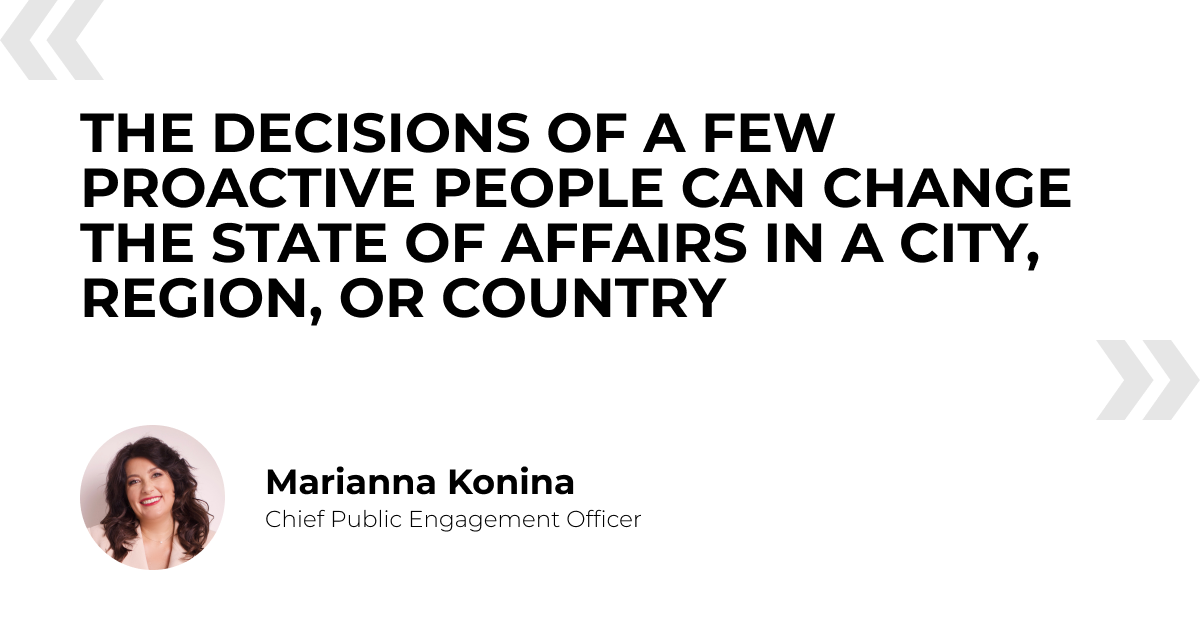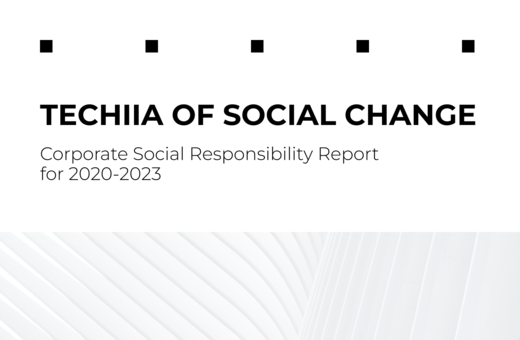
Marianna Konina, Chief Public Engagement Officer of the international holding TECHIIA.
Objectively, at this stage of Russia's war against Ukraine, it's premature to speak in detail about the restoration of cities and regions. However, it's evident that post-victory, our tasks might surpass the current scope. Even if not taking immediate action, we can and should accumulate ideas, examples, and potential projects. It's important to keep in mind that the decisions of a few proactive individuals can change the state of affairs in a city, region, or country.
I want to share three such cases. They remind us that each of us can do more than we think.
Avignon and Love for Theatre
1947. The municipality of the French city of Avignon explores ways to revive the city after the bombardment of 1944. From April to August, the city 37 attacks on bridges, infrastructure, and German occupant command posts, causing severe human suffering.
There was a need to change focus, seek new meanings, and find ways to breathe life back into the city. The local authorities allocated the main courtyard of the Papal Palace for the implementation of the "Art Week in Avignon" project. In conjunction with a contemporary art exhibition previously planned for the chapel of the Papal Palace, organizers invited actor and director Jean Vilar to present his first major public performance. Vilar, considering the stage's size, proposed not one play, but three: Shakespeare's "Richard II," which was almost unknown in France at that time, Paul Claudel's "Tobie et Sara," and Maurice Clavel's "La Terrasse de Midi."
The project was a success. Since then, the festival's program offers audiences unfamiliar works or contemporary texts. And since 1963, the Festival Off d'Avignon has run parallel — a platform for independent troupes.
The local additional income generated by the project is at 52 million euros. Approximately 9.3 million euros of that amount are direct revenues from the classical festival in Avignon, with 1.7 million euros from the Festival Off d'Avignon. 41 million euros are indirect revenues, with nearly 60% of these funds coming from outside the region.
To ensure the festivals' operation, organizers receive subsidies from the country's budget, the region, patrons, and involve 700 people who continuously service the festival. Another minimum of 700 people are engaged for shorter periods, and 80% of all employees come from the region. The annual payroll budget is 16 million euros.
Today, the Festival d'Avignon is Europe's oldest festival and one of the most prestigious international theater platforms.
From one experiment emerged one of the world's most significant events in the industry, transforming a post-war ruined city into a must-visit destination for nearly 300,000 tourists annually. This became possible due to broad perspectives on restoration options, courage, and engaging professionals of various profiles.
Copenhagen and Anti-Crisis Urbanism
In the mid-20th century, Copenhagen was congested with automobiles. However, the 1970s oil crisis prompted people to rethink their personal logistics. The cheapest solution became the bicycle.
To create more conveniences for non-car users, the municipal authorities closed the main historical street, turning it into a pedestrian and trade-friendly zone. This was an unprecedented step, yet justifiable. Within the first year, pedestrian numbers by 35%. People joyfully strolled, visited shops and cafes, and simply lingered in the urban space.
During the experiment of pedestrian-bicycle integration, officials calculated that cars did not accelerate but rather slowed down movement. For instance, a 7-meter-wide pedestrian street (or two 3.5-meter-wide sidewalks) can accommodate 20,000 people per hour. A 2-meter-wide bike lane accommodates 10,000 bicycles per hour. A two-lane street, accommodating cars during peak hours, handles up to 2,000 vehicles. Thus, a regular bike lane transports up to five times more people than a car road — since cars typically have few passengers. Parking also illustrates a similar situation — 10 bicycles can fit in one car parking spot.
Inspired by the solution's popularity and considering the figures, the city laid down bike lanes, separated them from sidewalks, parking areas, and car lanes with curbs. The lanes between sidewalks and parking lanes are often only marked by color. Consequently, parked cars shield cyclists from moving traffic. Even traffic lights were adjusted to allow bicycle movement 6 seconds earlier.
These initiatives yielded results: Copenhagen consistently ranks among the most comfortable cities to live in. For example, in 2022, the city the 2nd spot in such rankings, trailing only Vienna.
Unprecedented steps can also be effective — especially in crisis situations. Importantly, in the context of Ukraine's recovery, urban transformations should rely on calculations and deep expertise. There's much for us to work on.
The Basques and Food Aesthetics
The Basque Country was a prosperous and economically successful region in the 19th and the first half of the 20th century due to metallurgy and shipbuilding. However, the economic crisis of the 1970s and 80s led to the decline of what was once a powerful territory. Instead, it paved the way for the development of the service and technology sectors.
Currently, the Basque Country's economy is based on financial services, energy, technological production, and logistics. However, a special place among industries is held by gastronomy.
The so-called "new cuisine" of the region also originated in the 1970s and 80s when top chefs, inspired by the French experience, decided to modernize traditional cuisine. Among the most successful experiments was molecular cuisine, which remains popular to this day. Experts created new ways of presenting dishes using local products, seeking to showcase the region's character through the reimagining of traditional flavors and dishes. They initiated gastronomic events and collaborated with the media.
This active work had yet another motive. An armed nationalist organization was operating in the region, gaining global media attention for unfavorable reasons. Gastronomy became the first sphere that began to restore the Basque Country's good reputation. Currently, the region the highest number of Michelin-starred restaurants per inhabitant in Europe.
Today, 40% of all tourists visiting the Basque Country seek wine and gastronomic experiences. Previously, this figure stood at 13.8%. This migration generates jobs for 96,000 people in the production and logistics of products and adds 11% to the GDP.
The history of Basque Country gastronomy teaches: do what you believe is right, despite circumstances beyond your control. External factors will intervene, but the results of your work will remain.
These three cases from different periods demonstrate: regardless of the industry you work in, how the world changes around you, or the disadvantageous position you start from, it's more important to know what, how, and why you do what you do. Then, everything turns out even better than expected. And that's something we can take with us for Ukraine's future recovery.
Source:


